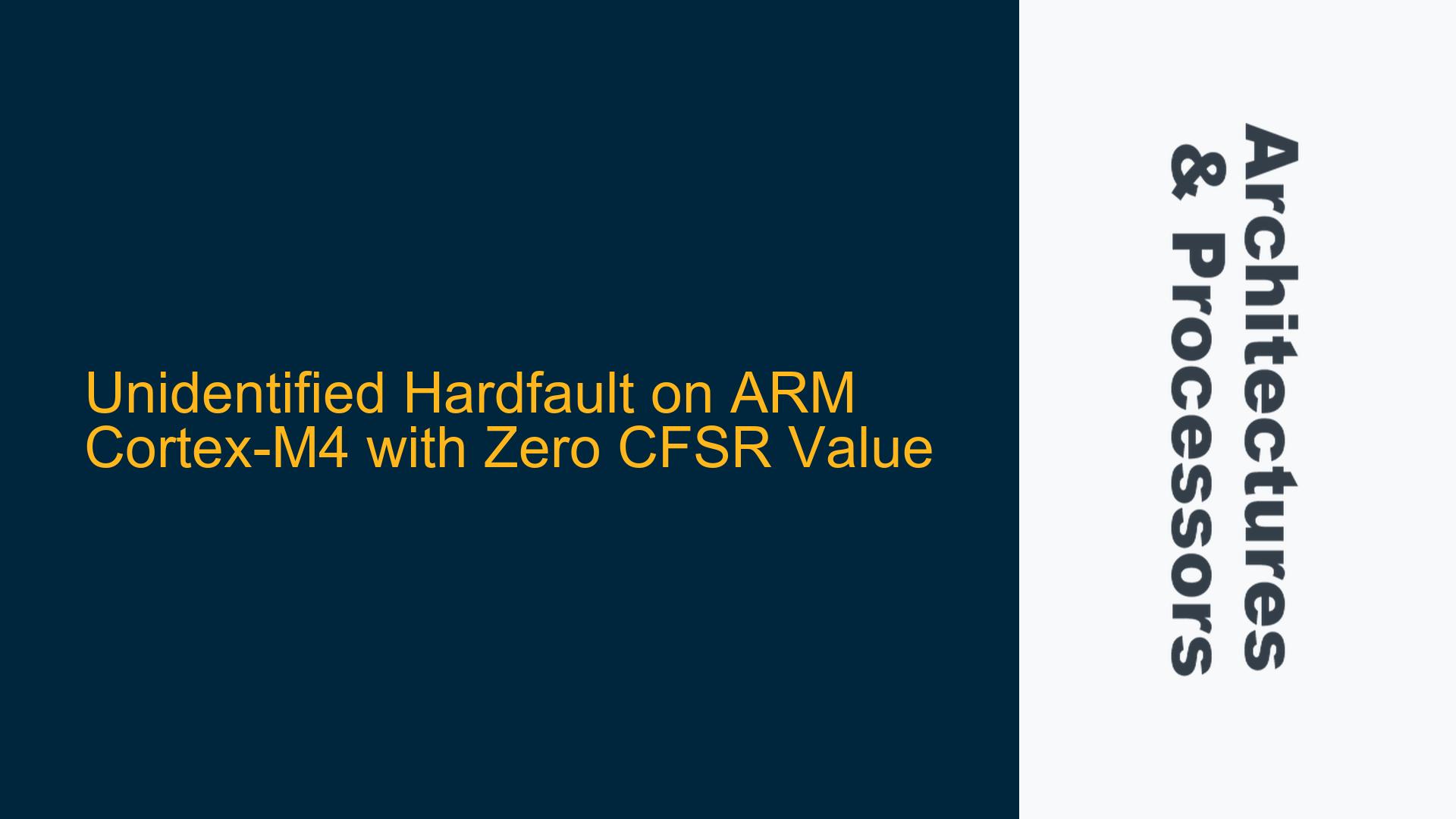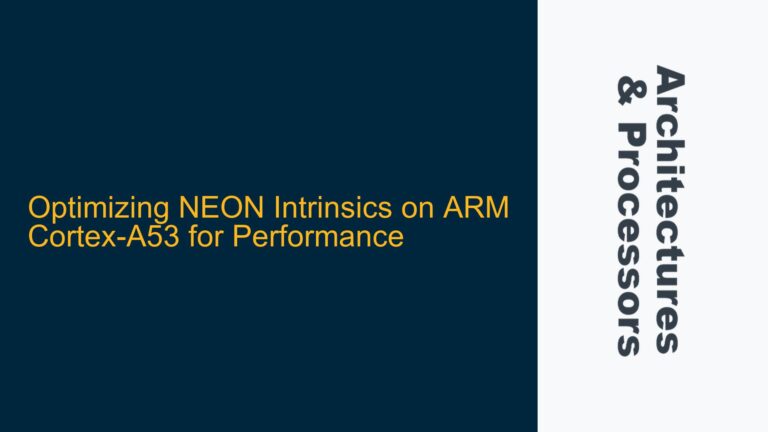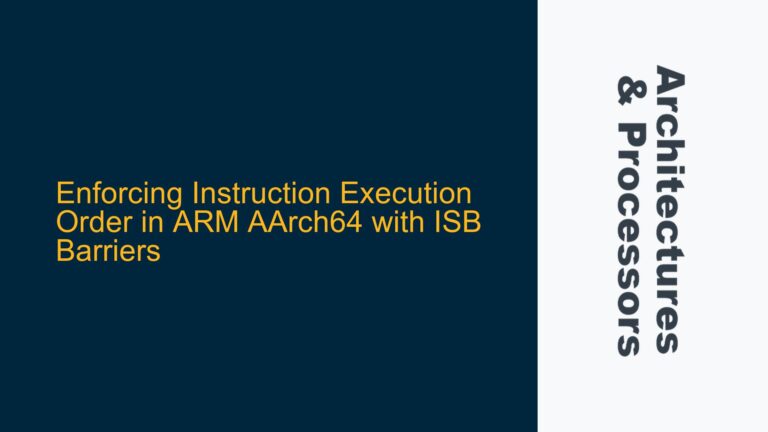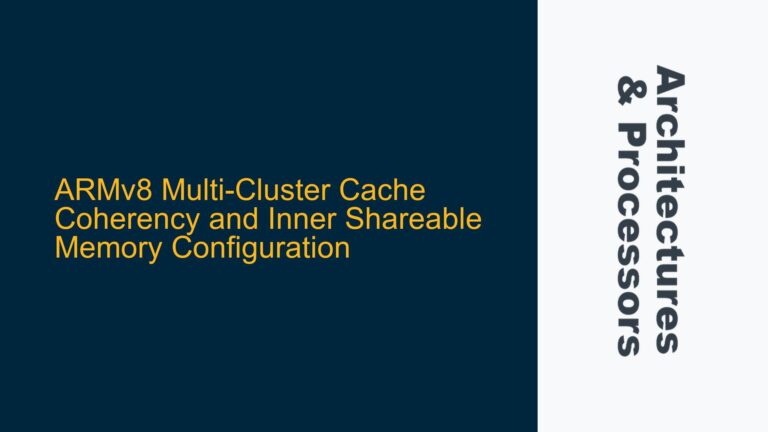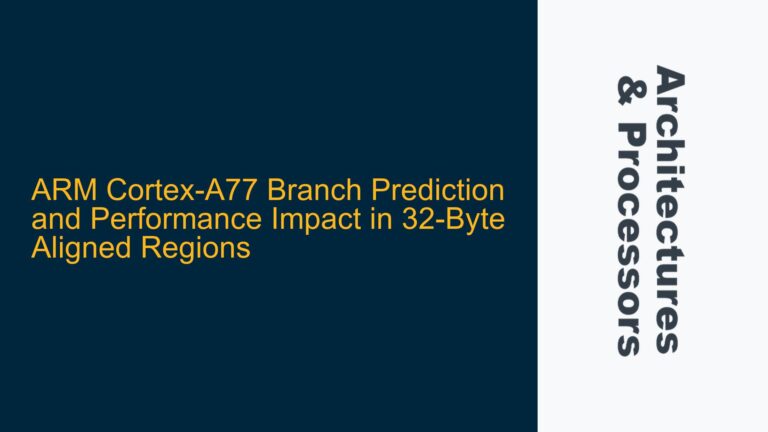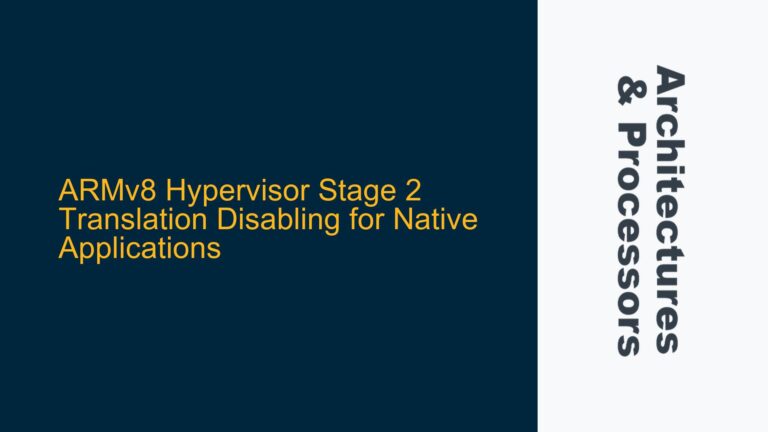ARM Cortex-M4 Hardfault with Zero CFSR Value
When working with ARM Cortex-M4 microcontrollers, encountering a hardfault is a common but often frustrating experience. A hardfault is a type of exception that occurs when the processor detects a severe error, such as an invalid memory access, an undefined instruction, or a division by zero. The Cortex-M4 provides several fault status registers to help diagnose the cause of the hardfault, including the Configurable Fault Status Register (CFSR), Hard Fault Status Register (HFSR), and others. However, in some cases, the CFSR may report a value of zero, which complicates the debugging process. This scenario is particularly perplexing because the CFSR is designed to provide detailed information about the nature of the fault, such as whether it was caused by a memory management fault, a bus fault, or a usage fault.
The CFSR is divided into three main sections: the Memory Management Fault Status Register (MMFSR), the Bus Fault Status Register (BFSR), and the Usage Fault Status Register (UFSR). Each of these sub-registers contains bits that indicate specific types of faults. For example, the MMFSR can indicate whether a fault was caused by an access to a memory region that is not permitted, while the BFSR can indicate whether a fault was caused by an error on the bus, such as a misaligned access or a prefetch abort. The UFSR can indicate faults related to undefined instructions, invalid state transitions, or division by zero.
When the CFSR reports a value of zero, it suggests that none of these specific fault conditions were detected, which is unusual given that a hardfault has occurred. This situation can arise due to several reasons, including corruption of the fault status registers, incorrect handling of the fault by the software, or even hardware issues. The challenge is to identify the root cause of the hardfault when the CFSR does not provide the expected diagnostic information.
Memory Corruption and Fault Status Register Overwrite
One of the primary reasons for a zero CFSR value during a hardfault is memory corruption. Memory corruption can occur due to various reasons, such as stack overflow, buffer overflows, or incorrect pointer manipulation. When memory corruption occurs, it can overwrite critical data structures, including the fault status registers. In the case of the Cortex-M4, the CFSR, HFSR, and other fault status registers are located in the System Control Block (SCB), which is part of the processor’s memory-mapped register space. If a memory corruption issue affects the SCB, it could result in the CFSR being overwritten with zeros or other invalid values before the fault handler has a chance to read it.
Another potential cause of a zero CFSR value is the incorrect handling of the fault by the software. When a hardfault occurs, the processor automatically pushes several registers onto the stack, including the Program Counter (PC), Link Register (LR), and Program Status Register (PSR). The fault handler is then responsible for reading the fault status registers to determine the cause of the fault. However, if the fault handler does not correctly read the CFSR or if it inadvertently modifies the CFSR before reading it, the fault information may be lost. This can happen if the fault handler itself contains bugs or if it is not properly designed to handle all possible fault scenarios.
In addition to software issues, hardware problems can also lead to a zero CFSR value. For example, if there is a problem with the power supply or the clock signal to the processor, it could result in unpredictable behavior, including the corruption of the fault status registers. Similarly, if there is a problem with the memory subsystem, such as a faulty RAM chip or a misconfigured memory controller, it could lead to memory corruption that affects the SCB and the fault status registers.
Debugging Techniques for Zero CFSR Hardfaults
To diagnose and resolve hardfaults with a zero CFSR value, a systematic approach is required. The first step is to ensure that the fault handler is correctly implemented and that it reads the CFSR and other fault status registers as soon as possible after the fault occurs. This can be achieved by placing the fault handler in a separate section of memory that is not affected by potential memory corruption issues. Additionally, the fault handler should be designed to minimize the risk of inadvertently modifying the fault status registers before reading them.
One effective technique for debugging hardfaults with a zero CFSR value is to use a debugger to inspect the state of the processor and the memory at the time of the fault. Most modern debuggers, such as those provided by Keil, IAR, and Segger, provide features that allow you to halt the processor when a hardfault occurs and inspect the contents of the fault status registers, the stack, and other critical data structures. By examining the state of the processor and the memory at the time of the fault, you can often identify the root cause of the issue, even if the CFSR does not provide the expected diagnostic information.
Another useful technique is to enable the Cortex-M4’s Memory Protection Unit (MPU) and configure it to detect and prevent invalid memory accesses. The MPU can be used to define regions of memory that are accessible only to specific parts of the software, and it can generate a fault if an invalid access is attempted. By enabling the MPU and configuring it to protect critical data structures, such as the SCB and the stack, you can often prevent memory corruption issues that could lead to a zero CFSR value.
In addition to using the MPU, it is also important to carefully review the software for potential sources of memory corruption, such as buffer overflows, stack overflows, and incorrect pointer manipulation. Static analysis tools, such as those provided by Klocwork, Coverity, and Parasoft, can be used to identify potential sources of memory corruption in the code. These tools analyze the code for common programming errors, such as out-of-bounds array accesses, use-after-free errors, and null pointer dereferences, and they can help you identify and fix issues before they lead to hardfaults.
Finally, if the issue persists despite these efforts, it may be necessary to consider the possibility of a hardware issue. This can be particularly challenging to diagnose, as hardware issues can be intermittent and difficult to reproduce. However, by systematically testing the hardware, including the power supply, clock signal, and memory subsystem, you can often identify and resolve hardware issues that could be causing the hardfaults.
In conclusion, hardfaults with a zero CFSR value on the ARM Cortex-M4 can be challenging to diagnose and resolve, but with a systematic approach and the right tools, it is often possible to identify and fix the root cause of the issue. By carefully reviewing the software for potential sources of memory corruption, using the MPU to protect critical data structures, and using a debugger to inspect the state of the processor and the memory at the time of the fault, you can often resolve these issues and ensure the reliable operation of your embedded system.
